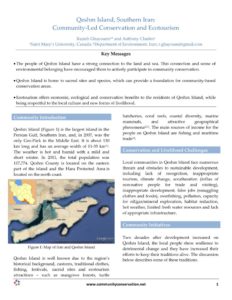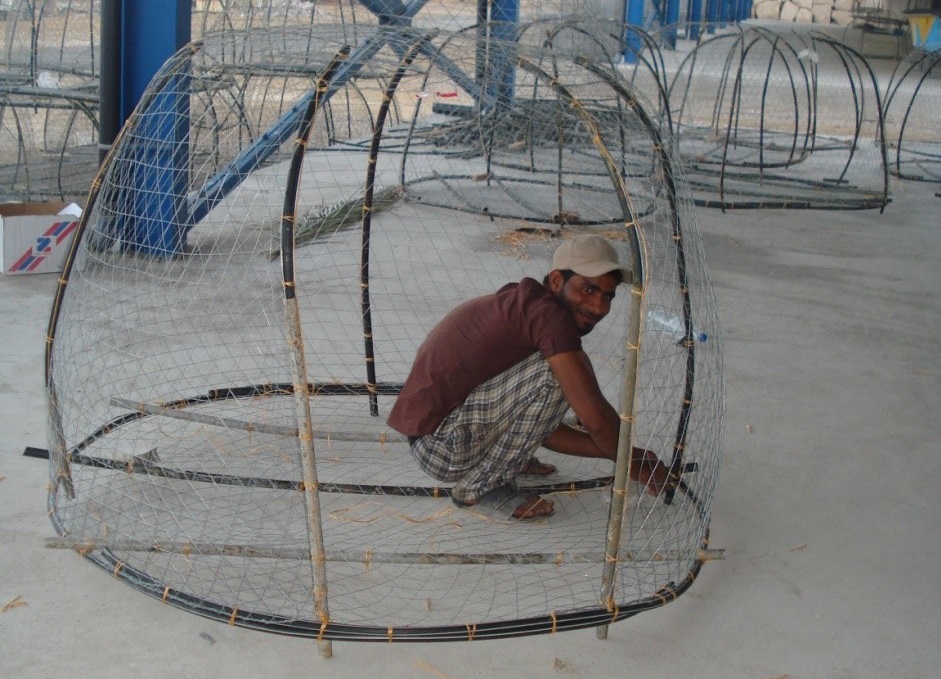
26 Sep Qeshm Island, Southern Iran
Razieh Ghayoumia,b and Anthony Charlesa
aSaint Mary’s University, Canada; bDepartment of Environment, Iran; r.ghayoumi@gmail.com
Key Messages
• The people of Qeshm Island have a strong connection to the land and sea. This connection and sense of environmental belonging have encouraged them to actively participate in community conservation.
• Qeshm Island is home to sacred sites and species, which can provide a foundation for community-based conservation areas.
• Ecotourism offers economic, ecological and conservation benefits to the residents of Qeshm Island, while being respectful to the local culture and new forms of livelihood.
Community Introduction
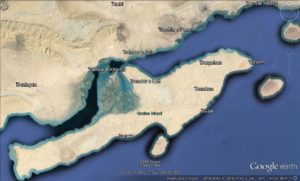
Figure 1: Map of Iran and Qeshm Island
Qeshm Island (Figure 1) is the largest island in the Persian Gulf, Southern Iran, and, in 2007, was the only Geo-Park in the Middle East. It is about 130 km long and has an average width of 11-35 km(1). The weather is hot and humid with a mild and short winter. In 2011, the total population was 117,774. Qeshm County is located on the eastern part of the island and the Hara Protected Area is located on the north coast.
Qeshm Island is well known due to the region’s historical background, customs, traditional clothes, fishing, festivals, sacred sites and ecotourism attractions – such as mangrove forests, turtle hatcheries, coral reefs, coastal diversity, marine mammals, and attractive geographical phenomena(2,3). The main sources of income for the people on Qeshm Island are fishing and maritime trade(2).
Conservation and Livelihood Challenges
Local communities in Qeshm Island face numerous threats and obstacles to sustainable development, including lack of recognition, inappropriate tourism, climate change, acculturation (influx of non-native people for trade and visiting), inappropriate development, false jobs (smuggling clothes and foods), overfishing, pollution, capacity for oil/gas/mineral exploration, habitat reduction, hot weather, limited fresh water resources and lack of appropriate infrastructure.
Community Initiatives
Two decades after development increased on Qeshm Island, the local people show resilience to detrimental change and they have increased their efforts to keep their traditions alive. The discussion below describes some of these traditions.
1. In late July, the local people (especially in Salakh village, in the south of the island) celebrate the Fisherman’s Norooz (Norooz-e Sayyad), which is a ‘new year’ for the fishery. On this day they do not fish or consume seafood. They believe the aquatic resources need a break for reproduction. The people swim in the sea so that they can be fresh and healthy until the next Fisherman’s Norooz. For this festival the people wear new clothes and prepare many different types of traditional foods. There are also traditional drums, dance and plays(5).
2. The island contains tree species that are considered sacred by the local people. One of these is the fig tree (Loor or Lool – local name). People respect these large trees because of the shade they provide, which is very important in hot weather. These trees have a deep connection to indigenous life and culture, with some even having their own names. Some of these trees are considered to be “Wish trees” and the people believe their wishes will be granted by the tree(4).
3. Tela wells (in the Laft historical port) are sacred to the local people. There were once 366 wells, each with a specific name. Nowadays, due to storms and earthquakes, the number of wells has been reduced to around 100(6).
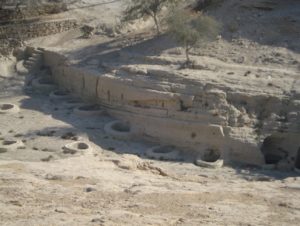
Figure 2: Tela sacred wells in Laft Historical Port, Qeshm Island
In the past, methods for efficient water use were extremely important, as was the sustainable use of natural resources. A female water guardian, or water master (known as a Mirab), carried out traditional water management(6). Due to climate change, decreases in water resources and cultural changes in water use (the modernization of lifestyles and consumption patterns), local people use these wells less than before. These wells are ancient but their age is still unknown.
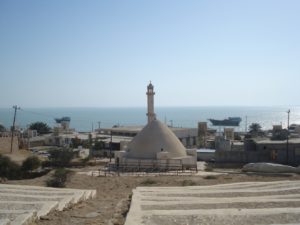
Figure 3: A water reservoir in Laft Historical Port, Qeshm Island
Practical Outcomes
Participation in Nature Tourism
Qeshm Island is a special place in terms of biodiversity and history. A sense of belonging, livelihood needs and spiritual and social values motivate the local people to participate in conservation. Tourist attractions specific to the Island’s culture include traditional architecture called Louvers, which are particularly prevalent in the Laft historical port. Water reservoirs spread out everywhere on the island and Dhow (fishing boat) building and traditional dance and folk music are part of the traditions of the local residents(4). The community has learned how to combine natural tourist attractions with their culture. The community leads various ecotourism activities, including tours to see dolphins, mangrove forests, turtle nesting sites, coral reefs, nature attractions, natural sacred sites, historical tours and scuba diving. Tourists can also purchase handicrafts and enjoy local food cooked in a community member’s home.
These activities have not only provided economic benefits to the community, but social and environmental benefits as well. Since tourists come to see the community traditions and natural attractions, ecotourism allows Qeshm Island residents to preserve their culture and natural resources. Sustainable tourism activities can help preserve traditional practices. These traditions are often associated with conservation and the sustainable use of natural resources. In addition, tourism leads to job creation, reducing the rate of emigration.
Participation in Conservation
Local residents of Qeshm Island voluntarily participate in conservation programs, such as sea turtle conservation (Hawksbill). In Shibderaz Village, in collaboration with the village council and Qeshm Free Zone Organization, around 25 km of the south coast has been declared a turtle breeding and hatchery area.
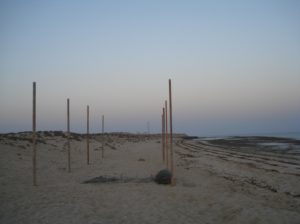
Figure 4: Setting up a safe place for turtle egg hatching and monitoring in Shibderaz village, Qeshm Island
During the egg laying and hatchery season, local people educate the public, patrol beaches, tag turtles, collect eggs, transfer eggs to special safe sites and guard the eggs. Women make different kinds of handicrafts with the sign of the sea turtle. They also have ecotourism activities to introduce their village and turtle conservation program to tourists(7).
The appreciation for the benefits of conservation, together with the recognition of the island’s ecotourism potential, has led to local interest in building a community-based marine and coastal conservation area on Qeshm Island, before development makes a greater impact. This protected area could be developed in a manner that draws on the successful models practiced in other countries, such as Australia, and incorporates research, monitoring, and education(8). In any case, the model used should be localized to fit the needs of the Qeshm Island community. Mechanisms, such as indigenous marine resource use, monitoring, research and education, could be used to help manage areas of interest. This recognizes the value of a mixture of techniques, as with management of the government’s parks, that rely on different conservation approaches(8).
One of the first steps needed to create this protected area is to develop supportive legislation and create more opportunities for the local people to become involved with conservation and tourism activities. In this regard, NGOs, government organizations, universities and research institutes should support the island community to develop local capabilities, and should provide assistance to establish a community-based marine conservation area through community involvement, networking, workshops, training activities and research.
References
1. UNESCO World Heritage Centre. 2016. Qeshm Island (Tentative Lists). Accessed July 20, 2016 at: http://whc.unesco.org/en/tentativelists/5215/
2. Duchaine, J., Hughes, H., Flippin, A. L., & Murphy, S. 2010. Frommer’s 500 extraordinary islands. Hoboken, N.J: Wiley.
3. Anonymous. 2009. Qeshm; Charm of Persian Gulf, Donyay-e Tejarat (in Persian), 21: 20-21.
4. Anonymous. 2010a. Qeshm Island, Jahan Gostar (in Persian), 66: 4-7.
5. Anonymous. 2010b. Norooz-e Sayyad Celebration, Donyay-e Tejarat (in Persian), 26: 49-50.
6. Dashtizadeh, A. 2012. Qeshm; Heritage of the Persian Gulf. Cultural Heritage, Handicrafts and Tourism Organization, Qeshm Free Zone Organization. 26 pp.
7. UNDP/GEF/SGP. 2003. Onshore Preservation of Hawksbill Turtle Eggs through Community Participation. Shibderaz, Qeshm. (Project Number: IRA-G52-2003, 2004 & 2007-024(IRA98G52)). Accessed July 20, 2016 at: http://www.ir.undp.org/content/dam/iran/docs/GEF-SGP/Marine%20and%20Coastline/Community%20based%20turtle%20conservation,%20SGP%20Iran.pdf
8. Smyth, D. 2009. Just Add Water? Taking Indigenous Protected Areas into Sea Country. In, Smyth, D. and Ward, G. (Eds) Indigenous Governance and Management of Protected Areas in Australia, Chapter 8 pp 95-110. E-book published by the Australian Institute of Aboriginal and Torres Strait Islander Studies. Accessed July 20, 2016 at: http://www.aiatsis.gov.au/research/publications/ProtectingCountry8.pdf
See below for the Persian language abstract for this community story, ” جزیره قشم، جنوب ایران , راهبری حفاظت با مشارکت جامعه و اکوتوریسم”




